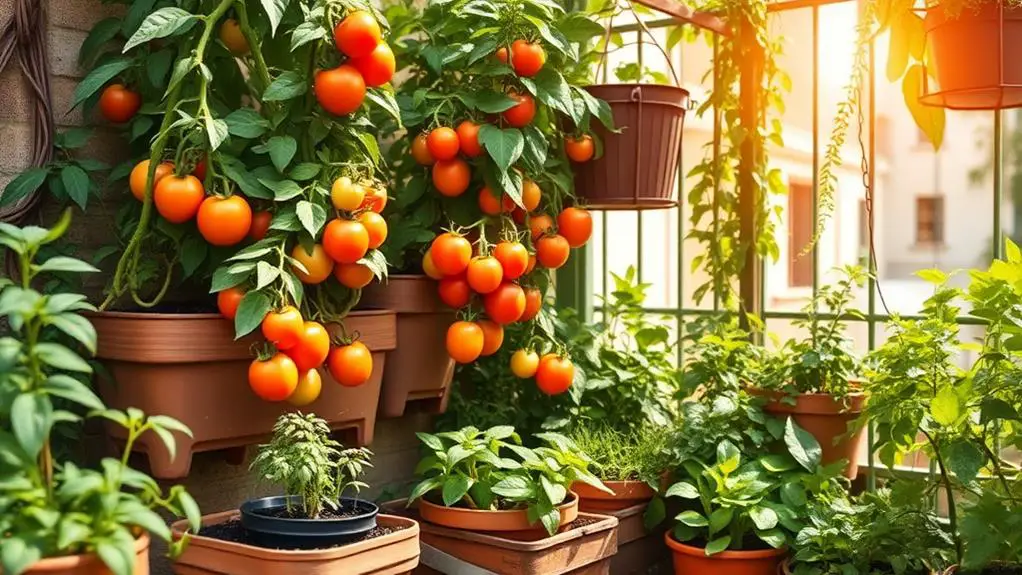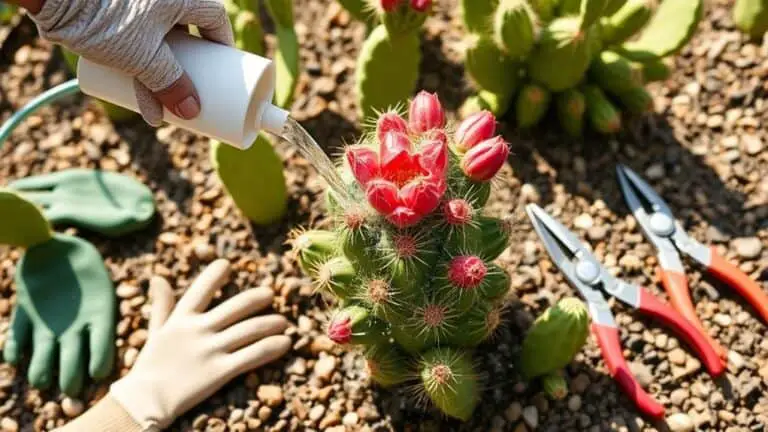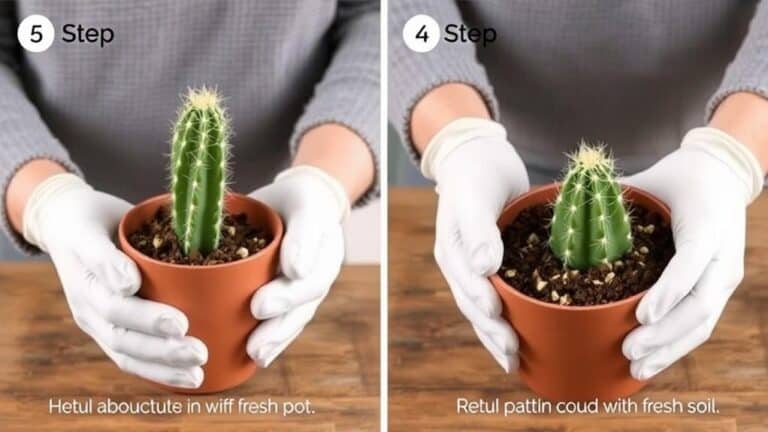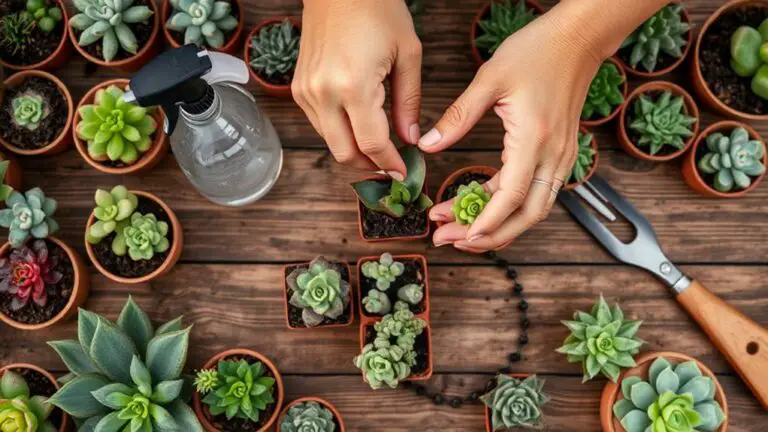Maximize Your Yield With These 3 Small Space Vegetable Garden Tips
If you're looking to get the most out of your small space vegetable garden, you'll want to focus on three main strategies: enhancing soil fertility, practicing succession planting, and growing vertically. By enriching your soil with organic amendments, you can guarantee your plants have the nutrients they need to thrive. Succession planting allows you to keep your garden productive throughout the growing season, while vertical gardening optimizes limited space. Curious about how to implement these techniques for a bountiful harvest? Here's how you can start transforming your small garden into a high-yield oasis.
Focus on Fertility
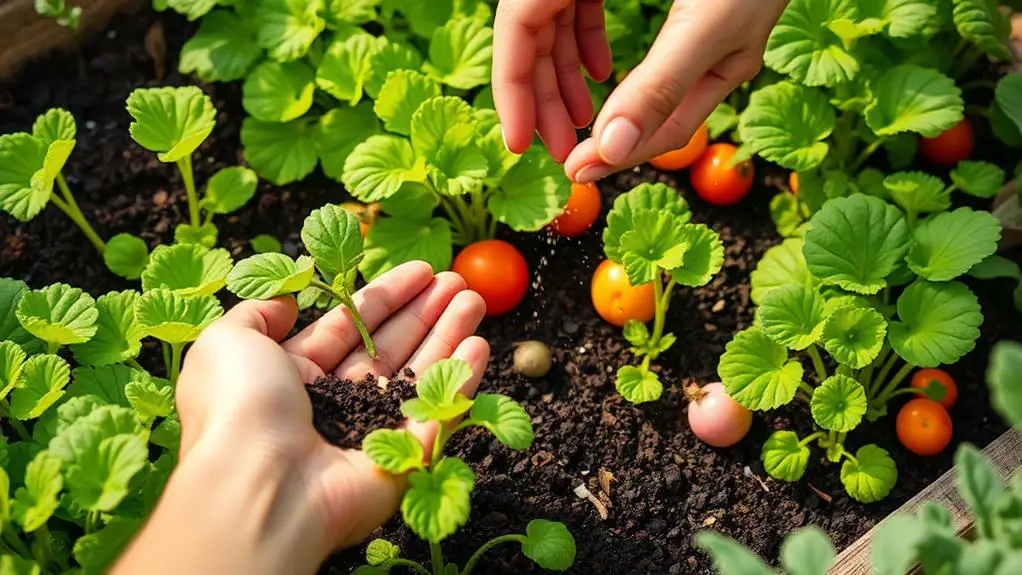
One key to maximizing your small space vegetable garden is to focus on fertility. By enhancing soil fertility, you'll boost plant health and achieve higher yields. Raised beds are a fantastic way to control soil quality. Using rich topsoil, compost, and organic amendments in these beds will greatly improve your garden's productivity.
Organic amendments like compost release nutrients slowly over time. This slow release supports sustained soil health and keeps your plants thriving throughout the growing season. Unlike synthetic fertilizers, which can lead to nutrient depletion, organic matter guarantees ongoing nutrient availability.
Regularly adding compost and other organic materials will keep your soil fertile and your plants happy.
To further enhance your small space gardening efforts, test your soil regularly. This helps you understand its nutrient levels and adjust your amendments accordingly. Higher soil fertility means more bountiful harvests, making the most of your limited space.
Succession Planting

Succession planting is a smart strategy for making the most of your small garden space. By planting new crops as soon as previous ones are harvested, you can maximize yield throughout the growing season.
For instance, you might plant peas early in the spring and, once they're harvested, follow up with fast-growing bush beans. This efficient use of your garden bed guarantees continuous harvests.
To implement succession planting, choose crops with varying maturity rates. This allows for staggered planting and harvesting times, keeping your garden productive.
Lettuce, for example, can be sown every few weeks, providing a steady supply of fresh greens. Such a planting schedule helps you make the best use of your limited space.
Grow Vertically
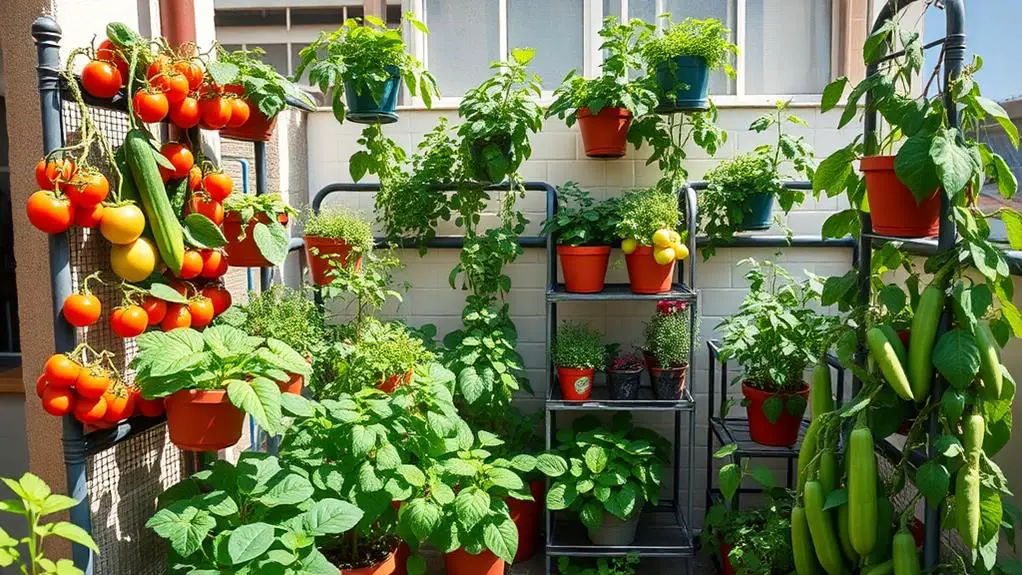
Growing vertically is a game-changer for small space vegetable gardening. Vertical gardening helps you maximize your garden's productivity by utilizing the space above the ground.
By using trellises, you can grow climbing plants like peas and beans, which can increase your yield by 2-3 times compared to traditional methods. This technique is particularly beneficial for small spaces, as it allows you to grow more crops without requiring additional ground space.
Vertical gardening also improves air circulation and sunlight exposure for your plants, leading to healthier growth and reducing the risk of soil-borne diseases.
Here are three ways you can implement vertical gardening in your small space:
- Trellises: Use trellises to support vining crops like cucumbers and squash. This not only frees up ground space but also makes harvesting easier.
- Shelves and Wall Planters: Incorporate vertical supports to grow herbs and small vegetables. This method keeps your crops elevated, ensuring cleaner produce and better quality.
- Climbing Plants: Train climbing plants to grow upwards. Peas and beans are excellent choices that can thrive when supported vertically, enhancing both yield and garden aesthetics.
Frequently Asked Questions
How to Maximize a Small Vegetable Garden?
Maximize a small vegetable garden by growing vertically with trellises, practicing succession planting for continuous harvests, and choosing space-efficient crops. Use companion planting and enrich soil with compost to boost growth and deter pests.
How Do I Lay Out My Vegetable Garden for a Higher Yield?
Lay out your garden using square-foot gardening principles. Use vertical gardening for climbing crops, intercropping for efficient space use, and succession planting for continuous harvests. Companion planting can enhance growth and deter pests effectively.
How Can I Increase the Yield of My Vegetables?
You can increase your vegetable yield by practicing succession planting, using vertical gardening techniques, and choosing high-yield varieties. Guarantee soil fertility with compost and organic amendments, and engage in companion planting to enhance growth and deter pests.
How to Make a Small Space Garden Thrive?
Use vertical gardening to save space, choose high-yield crops like cherry tomatoes and bush beans, and practice succession planting. These techniques guarantee your small garden thrives by maximizing space and keeping production continuous throughout the season.
Conclusion
You've got everything you need to turn your small space into a thriving vegetable garden! Focus on keeping your soil rich and healthy, plant your crops in succession for a continuous harvest, and make the most of your space by growing vertically. Remember, every little bit of effort you put in will pay off with delicious, home-grown veggies. Stay patient, keep experimenting, and enjoy the process. You can do this! Happy gardening!

